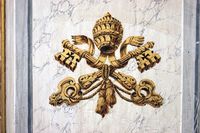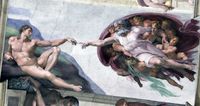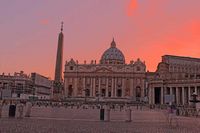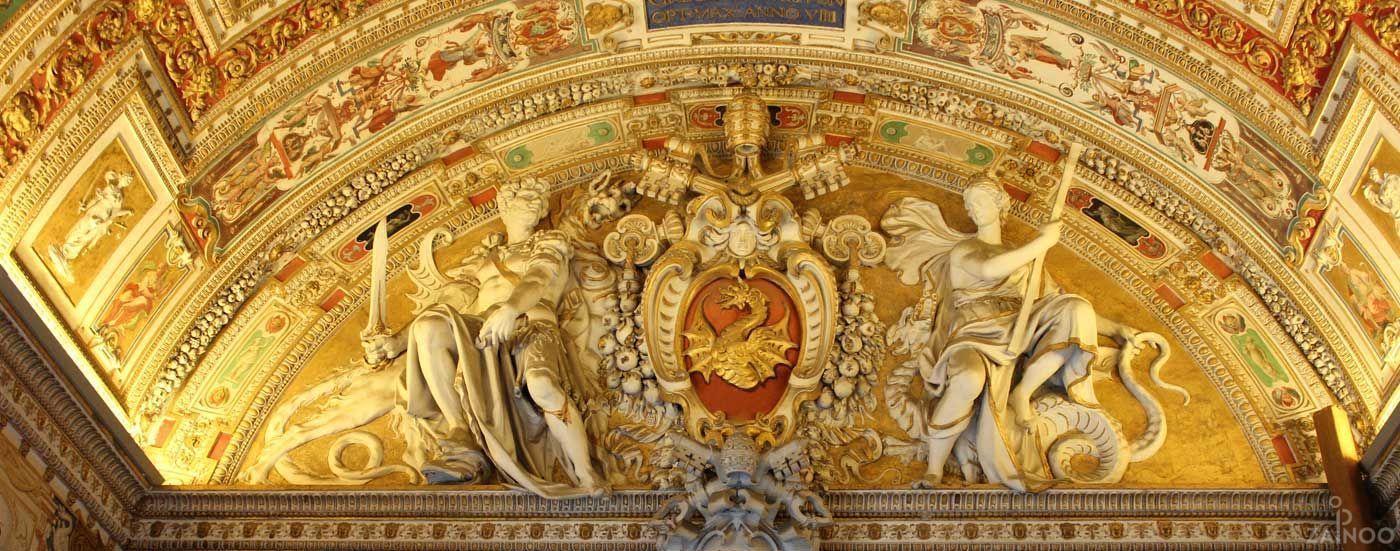The Roman church state
Emergence and flowering of the Vatican city state
With the fall of the Western Roman Empire, the Pope in Rome received the rank of a city lord. In the fight against the Lombards, Pope Stephen II allied with the Frankish king Pippin and received his own, secular territory - the Vatican state was created. In the aftermath the Vatican expanded its territory continuously over the whole of central Italy. Conflicts with the German emperors eventually led to the Great Western Schism. After a prolonged flowering period from the 15th to the 18th Century the Vatican lost its sovereignty with the unification of Italy and managed to get back its land only under Mussolini.
The beginnings of the Papal States
During the persecution of Christians under the Roman emperors, the popes were already in Rome. With the appointment of Christianity as the state religion, the relocation of the Western Roman capital to Milan and then to Ravenna, and finally the fall of the Western Roman Empire, the Pope became the city lord of Rome. Churches were built all over the empire and the memories of the pagan gods were eradicated gradually. Constant barbarian invasions and the siege of Rome by the Lombards in 753 led Pope Stephen II to a pact with the Frankish King Pippin. In exchange for the divine kingship and the subsequent coronation of his son Charlemagne as the Emperor of the Holy Roman Empire of the German Nation, Pippin banished the Lombards and gave the Pope a private papal territory (The donation of Pippin), from which the Papal States developed.
The Vatican in the Middle Ages
Attacks of the Saracens, Normans and the constant disputes of the Roman nobility concerned the fate of the Vatican in the subsequent period. Disputes about the temporal power in Rome, Italy and the whole Christian world also led to disputes with the German Emperors, who besieged Rome repeatedly and unsuccessfully and waged war against the Vatican. Catastrophic conditions in Rome and a decline in population to less than 20,000 inhabitants eventually led to the great Western Schism (1378-1417). During this time, some 3 popes in Rome and Avignon ruled simultaneously. Only under Pope Martin V in 1417 did the Roman capital begin to rise. Subsequently numerous buildings were created and the artistic excesses of the Renaissance and Baroque still leave their traces in Italy's capital today - Rome and the Vatican came to a new golden age. Famous artists such as Michelangelo, Raphael and Bernini lived and worked at that time in Rome and let the city shine in a new light.
The Vatican until today
When Napoleon invaded Rome in 1808, he abolished the Pope by decree and deported Pius II to France. After a brief restoration of the Papal States at the Congress of Vienna, and then after the Italian unification, Rome became the new capital of the state and the Pope lived in exile behind the Vatican walls. Only Mussolini initiated the Lateran Treaty in 1929, which granted the Vatican state autonomy in the area of the Vatican and some extraterritorial churches and a say in Italian family and matrimonial law.





Tweet